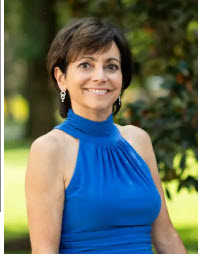Darlene M Freeman, Esq. Obituary

When President John F. Kennedy, in 1961, said “And so, my fellow Americans: ask not what your country can do for you. Ask what you can do for your country”, his words must have reached this then ten-year-old girl. Darlene Freeman embodied such commitment to excel in being a public servant by contributing her brilliant mind, intense focus and extraordinary interpersonal skills to aviation safety.
Her resume shows her exceptional career, especially the breadth of her expertise (not necessarily in chronological order):
- 1977 started as an attorney in the FAA’s Chief Counsel Office, where she quickly moved up the ranks in the Regulatory Division.
- Then moved over to FAA litigation Division.
- At a time when lateral promotions from the law she was named Deputy Director of Aviation Security.
- Her next job demonstrated the strength of her reputation, for she moved to the demanding position of Deputy Associate Administrator for Air Traffic Services,
- Executive Director, Learning and Development,
- Acting Deputy Associate Administrator for Human Resources.
- Regional Counsel
- Associate Administrator for Aviation Safety and Aviation Standards
- Senior Adviser to the Administrator.
- She also was part of the team that set up the new Department of Homeland Security and served as DHS’s Director of International Policy.
Ms. Freeman’s government service was marked by numerous accomplishments:
- She testified before Congress several times, managed aviation security initiatives after the Pan Am 103 bombing, and oversaw the organization responsible for the operation of the U.S. air traffic system.
- She was also the first woman to hold the position of Regional Counsel
- The first Hispanic woman to achieve senior executive status at the FAA.
- She led various organizational effectiveness initiatives, including FAA’s Foundation for Success initiative and FAA’s Senior Leadership Development Program
- Following the events of September 11, she was one of the key executives who launched the new Department of Homeland Security.
What this objective review of her 30 years of public service does not identify is that Darlene had a natural talent to convince rather than command. Though she knew the right answer, she took the time patiently to share her thoughts and usually and successfully “gained” buy in.
It is also important to recognize that Darlene’s decision to venture out from the Chief Counsel’s Office to other FAA’s organizations was courageous. Historically the FAA’s professional disciplines (law, HR, accounting, economics, etc.) were bastions of gender and racial talent, but organizational stovepipe practices had virtually prevented any such sharing of these knowledgeable, insightful minds with Air Traffic or Aviation Safety. By stepping out of the 9th floor Darlene was a pioneer. Her career should serve as a role model for all public servants.
Mr. Kennedy’s call was met and surpassed by this outstanding person. She will be missed, but her example should serve future federal employees as a role model.

++++++++++++++++